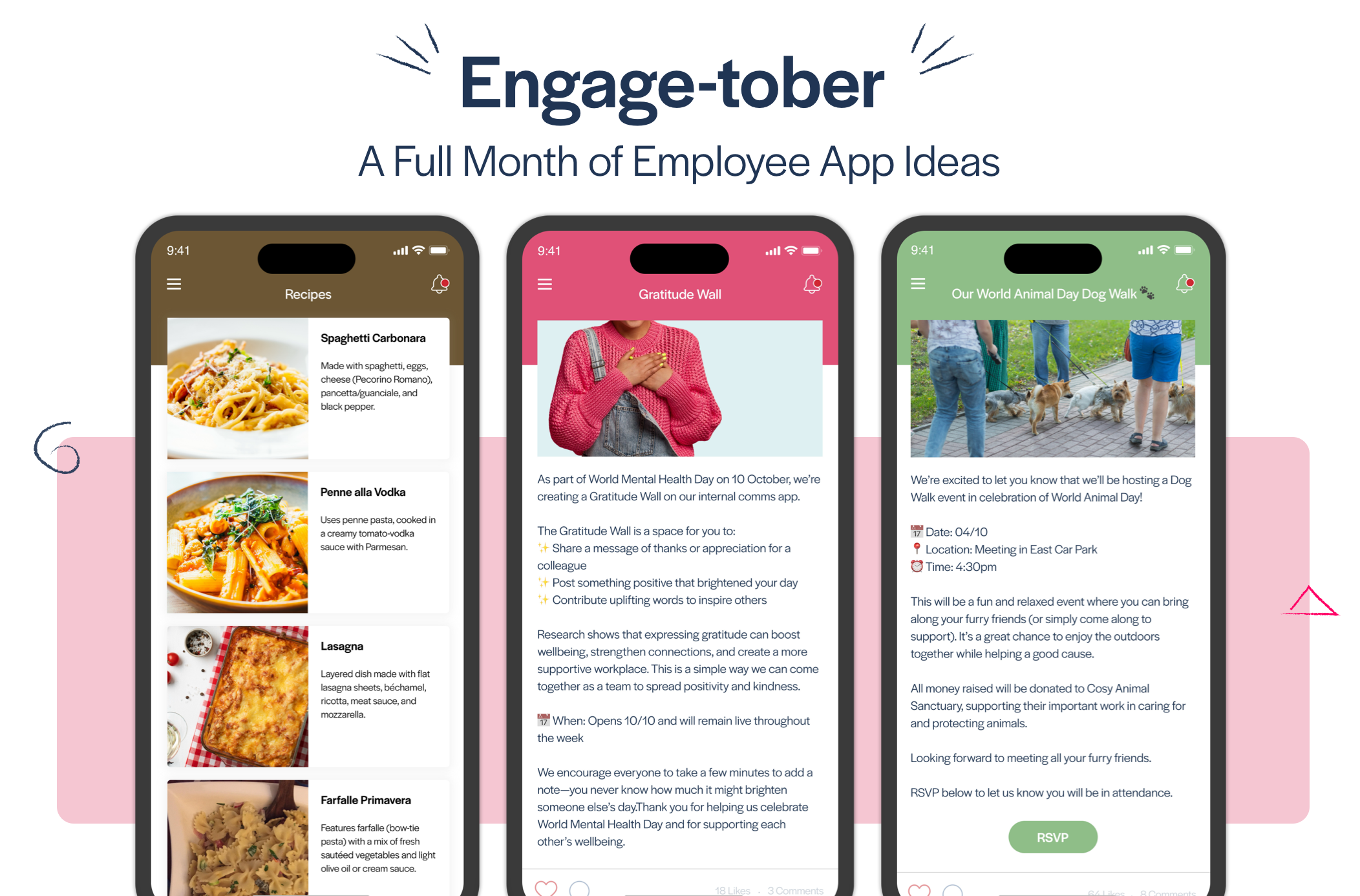
Blog
Power up Employee Engagement in the Utility & Energy Sector
Turning Disconnect to Connection for remote and field employees. Keeping them safe, informed and engaged. The answer may be in the palm of their hands.

The challenges of keeping remote and field workers connected are almost too numerous to count. Those who manage communications in the utility and energy industries know this all too well: Isolation can lead to disconnection, which can turn to apathy—the opposite of engagement.
The secret to engaging these employees who don’t work at a desk or in an office? It may lie in connecting employees’ everyday jobs to wider organisational objectives using the right technology.
Some of those objectives might include widespread and job- or site-specific communication, safety, sustainability, innovation, and an inclusive culture.
When employees feel their roles have a direct impact on achieving those objectives, combined with feeling they have the right information and technology to support their efforts, they’re much more likely to be engaged.
Here are two ways you can facilitate that connection, along with examples from companies in your sector that are successfully doing just that.
Ask Your Employees
Employee surveys and focus groups can be good starts in identifying communications gaps and understanding what types of communications channels and tools your employees find effective.
One of the first things you should ask is whether employees feel they are getting the information they need, or if they often feel out of the loop. Subsea 7—a global leader in offshore projects and services for the energy industry, where safety and speed of information must be top priority—used a routine employee survey to ask this question. They learned that teams operating their 30 high tech specialist vessels were concerned with both the type and consistency of communication.
At the time, high stakes communication was delivered via line management. Subsea 7 turned to a technology approach instead—an employee communications app— to provide critical updates and other news. The app also allows their offshore teams to engage with each other and leadership via the app, so although they’re remote, they always feel connected.
Another thing to ask: What types of communication channels do your employees prefer? What ideas for innovative technologies do they have that could enhance communications and improve reach and effectiveness? Even if you already have a multi-channel communication strategy in place, it’s worth going to employees to get their feedback.
SGN, a UK natural and green gas distribution company, learned via focus groups that their employees like digital communications but were not fans of the aging intranet. They also learned that employees were not interested in a shrunken intranet experience that would fit on their mobile devices.
They listened when employees expressed that they wanted something that would be more dynamic, timely and relevant, and turned to an employee communications app from Thrive. The resulting app (called SGNapp) was the solution they needed to reach all employees, could be deployed fairly quickly and that would be cost-effective.
Consider a BYOD Policy
Employees in these sectors often report being disconnected, and part of the problem has to do with inconsistency in devices. Desk less workers may or may not have access to a company mobile device, and those devices aren’t reliably equipped to deliver company information.
BYOD (bring your own device) is a growing trend amongst organisations large and small that creates flexibility for employees, letting them engage whether they’re commuting, travelling to job sites, working in the field, or even in the office.
It’s showing great promise: When employees bring their own smartphones, tablets, or even laptops, efficiency and employee satisfaction improve.
Given BYOD is a new concept for many organisations, it makes sense to consider the security and compliance implications. Selecting a communications platform that can protect this information can mitigate these risks. An employee communications app that has built-in security features and solves for industry-specific communications problems was the answer for SSE, a company in electricity and gas services in the UK and Ireland, that has a BYOD policy, in part because nearly one-third of their 21,000-strong workforce is remote.
SSE’s employees can use the secure app on their personal devices for incident reporting, to receive push notifications specific to their location, as well as to access job training, contact numbers, information about company policies and more. Perhaps their most-used feature is the ability to disseminate high quality video to every employee.
Whatever your particular challenges are in keeping your remote and field employees engaged, it’s time to take an approach that generates engagement in a perpetual fashion. It starts by empowering employees through asking for—and acting on—their feedback, and continues when you connect them to a secure employee communications platform they can access anywhere, anytime, on their personal or work devices.
Next steps…
Are you interested in understanding how you can leverage technology to power communications and engagement with your employees in the energy and utility sector? Let’s discuss how an employee communications app might help you better reach your remote and field employees.









